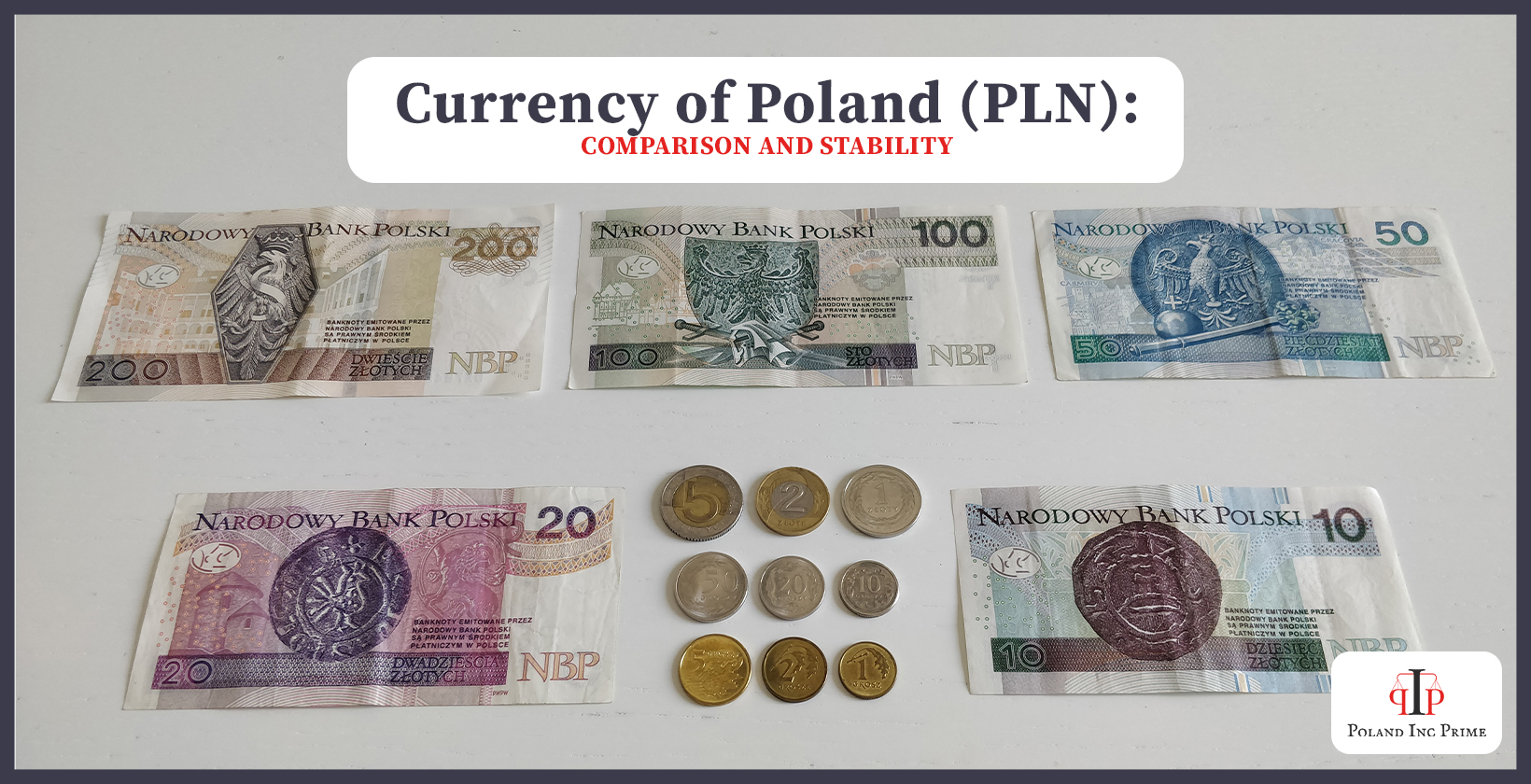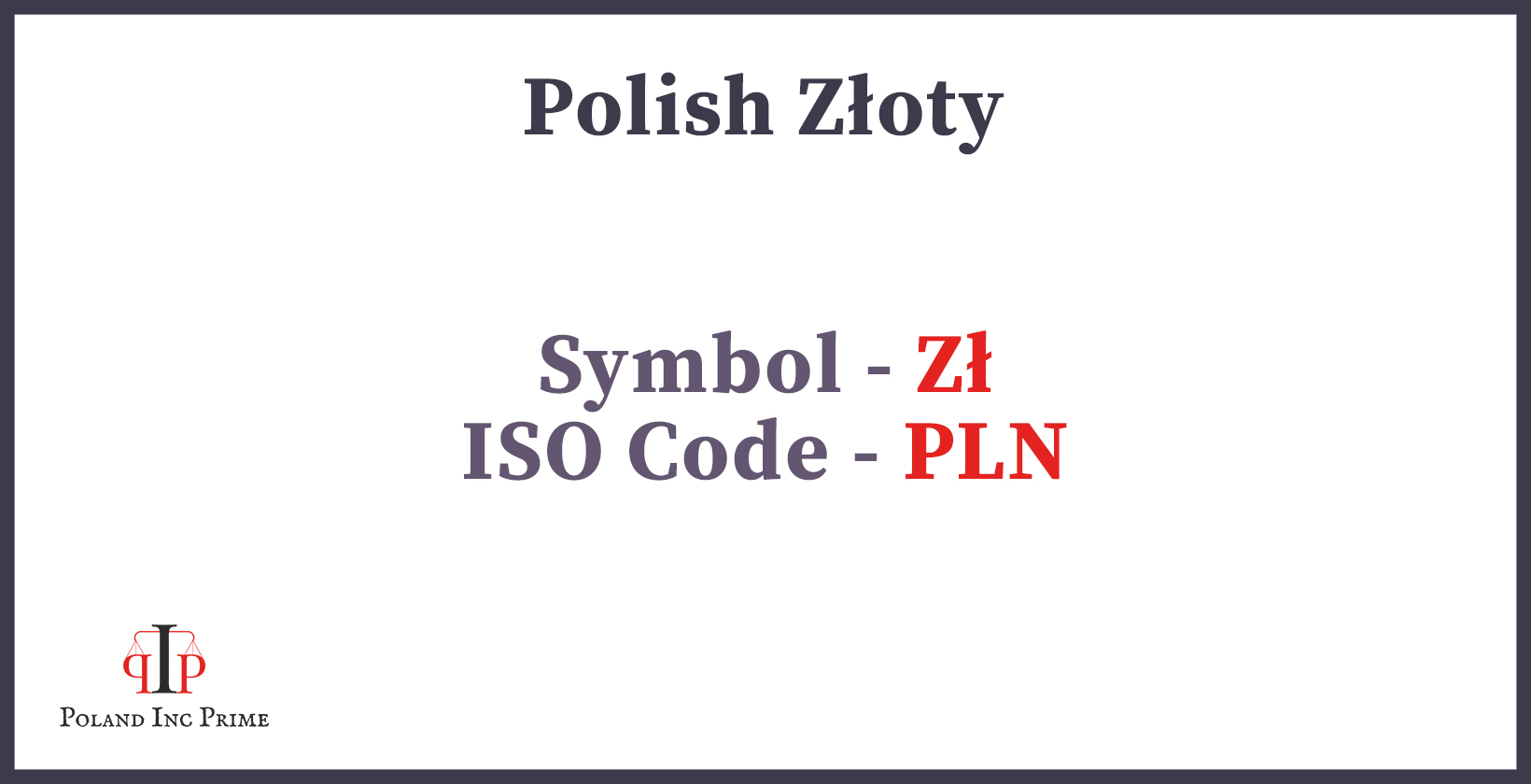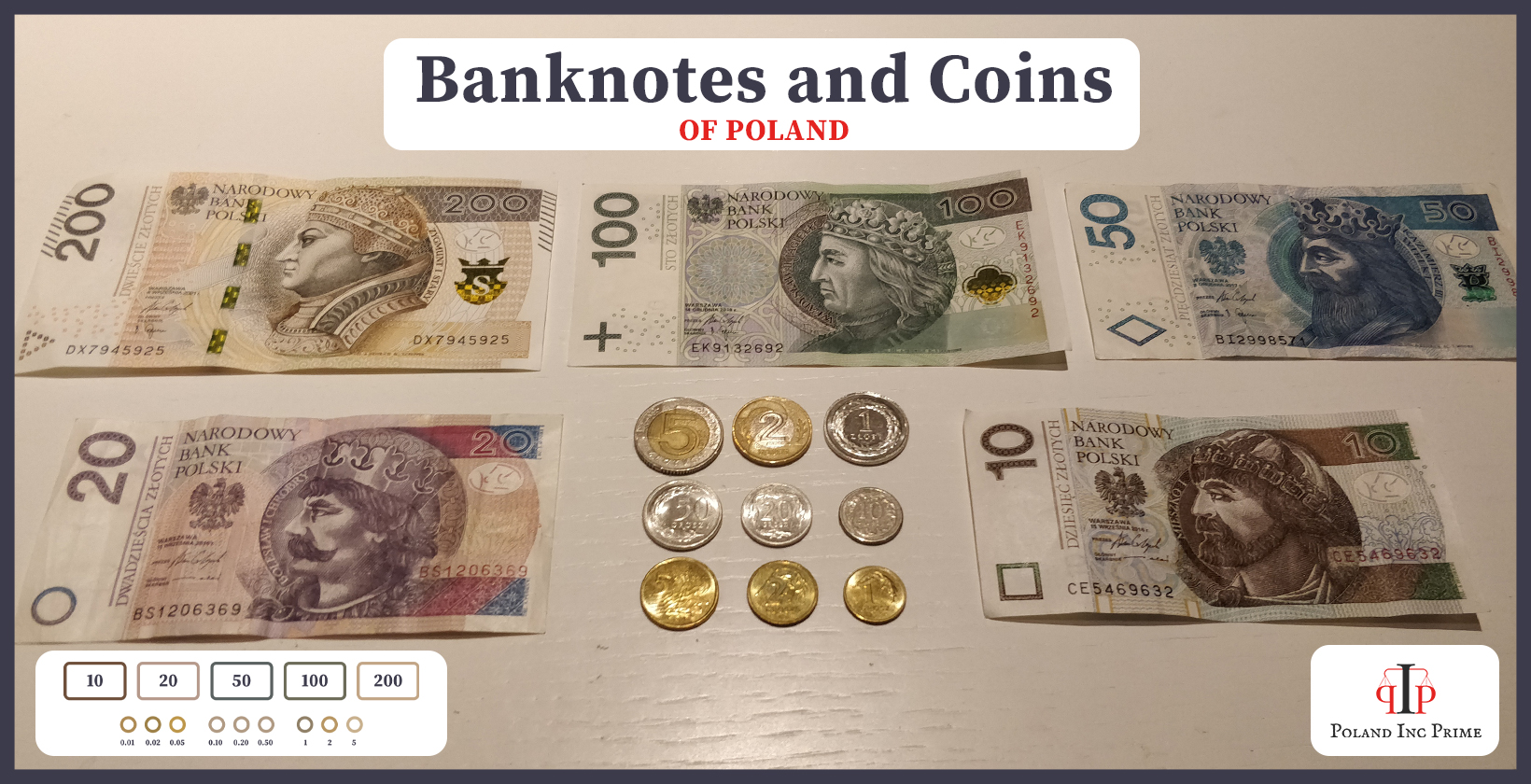
Currency of Poland (PLN): Comparison and Stability
Currency is a medium of exchange that is widely accepted in transactions for goods, services, or settling debts. The official currency of Poland is the Polish Złoty, abbreviated as PLN. The Polish Złoty is integral to the country’s economic system and plays a pivotal role in facilitating daily commerce.
The currency of Poland, which people know as the Polish Złoty, is represented by the symbol “zł” and is often denoted as PLN, which stands for “Polski Złoty Nowy” or “Polish New Złoty.” One złoty is subdivided into 100 smaller units known as grosze.
The Polish Złoty has been in use since its introduction on January 1, 1995, replacing the previous currency, the Polish Old Złoty (PLZ). It has become an integral part of the country’s financial landscape and serves as a testament to Poland’s economic stability and growth since its transition from a centrally planned economy to a market-driven one.
While the Polish Złoty is the official currency, it’s worth noting that Poland is a member of the European Union (EU). As such, the euro (EUR) is widely recognized and used in certain contexts, especially in regions near the border where cross-border transactions are common. However, the Polish Złoty remains the sole legal tender within the country’s borders and retains its significance as the official currency of Poland.
Table of Contents
Does Poland use the euro currency?
No, Poland does not use the euro currency as its official currency.
While Poland is a member of the European Union (EU), it has not adopted the euro as its official currency. This means that when you visit Poland, you should be aware that the local currency is the Polish Złoty (PLN), and you will be using złoty for transactions. While some businesses in Poland, especially those near the border, may accept the euro for convenience due to cross-border trade, the country doesn’t fully accept the euro as a legal tender.
When spending time in Poland, it’s recommended to have Polish złoty on hand for your transactions. While using euros might be possible in certain places, it’s not universally accepted, and you might encounter unfavorable exchange rates or limitations.
How do Polish Zloty compare to other currencies?
Comparison between the Polish Złoty (PLN) and several other currencies is presented below, indicating their relative exchange rates and currency symbols.
- 1 unit of American Dollar (USD) equals approximately 4.09 PLN (exchange rate: 1 $ = 4.09 zł).
- 1 unit of Nigerian Naira (NGN) equals approximately 0.0053 PLN (exchange rate: 1 ₦ = 0.0053 zł).
- 1 unit of Euro (EUR) equals approximately 4.47 PLN (exchange rate: 1 € = 4.47 zł).
- 1 unit of Indian Rupee (INR) equals approximately 0.049 PLN (exchange rate: 1 ₹= 0. 049 zł).
- 1 unit of British Pound Sterling (GBP) equals approximately 5.20 PLN (exchange rate: 1 £= 5.20 zł).
These exchange rates provide an overview of the relative values of the Polish Złoty against the mentioned currencies. Note that exchange rates fluctuate due to various economic factors and market conditions. Travelers, investors, and individuals engaged in international trade should keep a close watch on exchange rates to make informed decisions when dealing with different currencies.
What is the symbol of polish currency?
The symbol of Polish currency, the Polish Złoty (PLN), is “zł”. The abbreviation (ISO code) of Polish Złoty is PLN.

Banknotes denominated in Polish Złoty feature various designs and denominations, depicting elements of Polish history, culture, and landmarks. These banknotes play a crucial role in the country’s financial system, facilitating transactions and representing the nation’s economic stability.
Which banknotes and coins are used in Poland?
In Poland, the currency used includes both banknotes and coins. Polish banknotes, often referred to as “Polish notes,” are issued in various denominations, ranging from smaller values to higher denominations. These banknotes prominently feature notable figures, historical landmarks, and cultural elements that represent Poland’s rich heritage. The banknotes are designed with advanced security features to ensure their authenticity and prevent counterfeiting.
In addition to banknotes, a range of coins is also used as currency in Poland. These coins come in various denominations and are used for everyday transactions. They often depict national symbols, historical figures, and other culturally significant images.

The presence of a diverse range of banknotes and coins in circulation reflects the strength and stability of the Polish currency. This stability is a testament to Poland’s robust economy and prudent financial policies. The availability of different denominations of money, from banknotes to coins, allows for convenient transactions and the smooth functioning of Poland’s cash economy.
Is polish currency stable?
Yes, the Polish currency, is stable and has demonstrated a relatively stable performance.
Over the past years, Poland has managed to maintain a stable Polish economy with controlled inflation rates. The country’s prudent economic policies and effective management have contributed to the stability of the Polish Złoty. The government’s commitment to fiscal responsibility and the central bank’s policies to curb inflation have played a significant role in maintaining the currency’s stability.
This stability makes the Polish Złoty an attractive option for both domestic and international transactions. It instills confidence in investors, businesses, and individuals, as it reduces the risks associated with currency fluctuations.
For those considering storing money or engaging in financial activities involving the Polish Złoty, the currency’s stability provides a favorable environment. It allows for better financial planning, investment decisions, and overall economic activities with reduced concerns about sudden depreciation or hyperinflation that adversely affects the value of money.
Is it safe to store money in polish currency?
Yes, it is generally safe to store money in Polish currency, the Polish Złoty (PLN).
Poland has maintained economic stability over the years, with controlled inflation and a strong financial system. This stability contributes to the safety of storing money in Polish Złoty. The country’s prudent fiscal policies, regulatory frameworks, and effective management of its economy add to the confidence that individuals, investors, and businesses have in the currency.
Storing money in Polish Złoty is a secure choice for both short-term and long-term purposes. However, it’s important to consider individual financial goals, economic conditions, and any potential currency risks. Diversifying investments and staying informed about economic developments will help individuals make informed decisions when it comes to managing their finances.
For operating or running a business in Poland, using the national currency as a medium of exchange and for transactions is a natural choice. The stable currency environment contributes to a predictable business environment, making financial planning and budgeting more manageable. It also reduces the risks associated with currency fluctuations, providing a solid foundation for businesses to thrive and succeed in Poland’s economy.
Is it safe to run a business using Polish currency?
Yes, it is safe for investors planning on doing business in Poland using Polish currency, the Polish Złoty (PLN).
Poland maintains a stable and well-regulated economic environment, which includes a strong financial system and prudent fiscal policies. This stability extends to the national currency, the Polish Złoty, making it a secure choice for conducting business operations. Using the local currency for transactions, payments, and financial activities within the country provides a sense of predictability and reduces the risks associated with currency fluctuations.
Furthermore, conducting business in the local currency simplifies financial planning and budgeting. It eliminates the need to navigate exchange rate uncertainties that impact profitability and financial projections when dealing with foreign currencies.
Poland’s business-friendly policies, steady economic growth, and stable currency contribute to a conducive environment for entrepreneurs and businesses to operate and thrive. However, as with any business venture, it’s important to consider individual circumstances, market dynamics, and economic trends when making decisions related to currency usage and financial strategies.